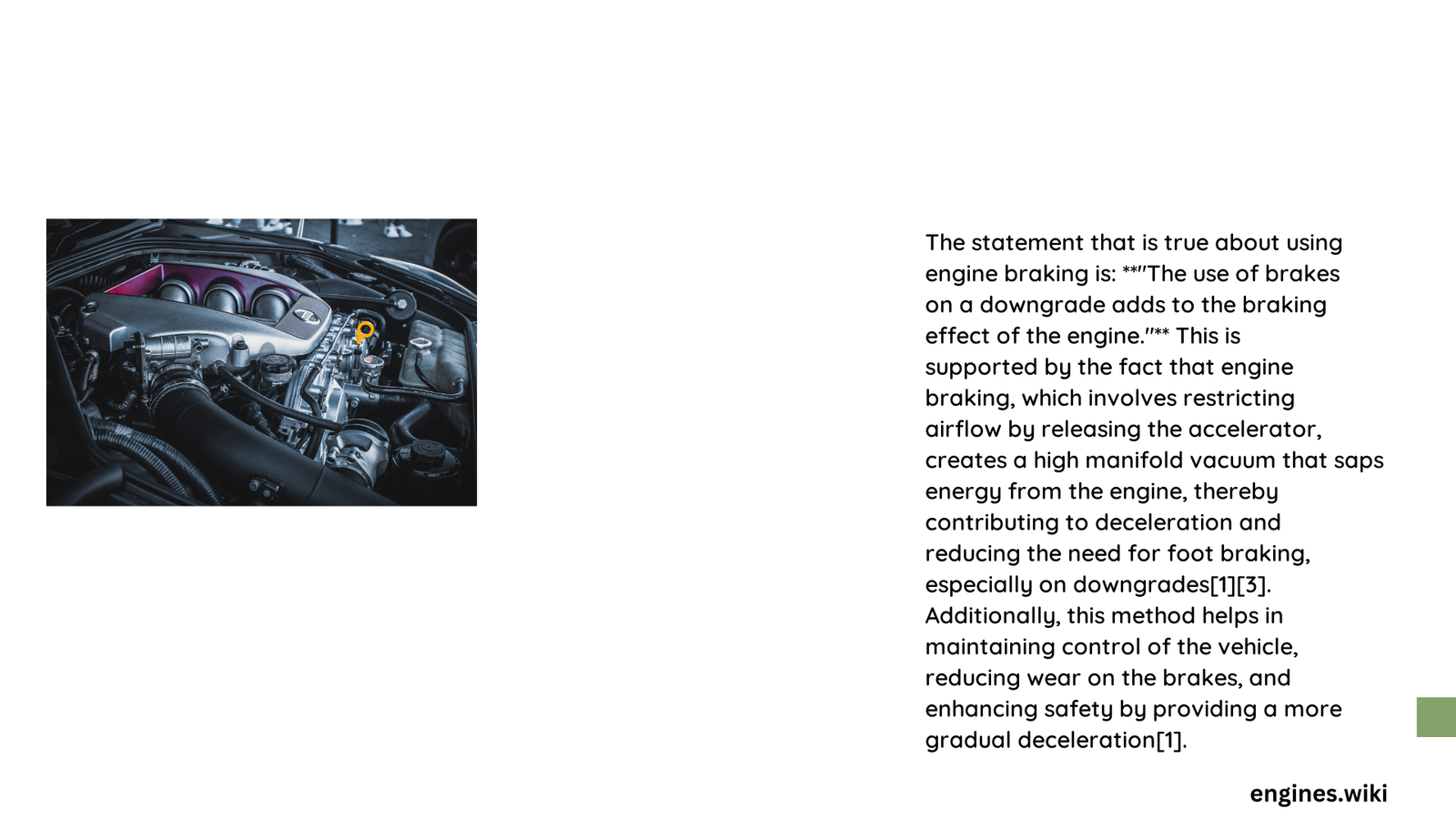Engine braking represents a sophisticated driving technique that leverages the vehicle’s powertrain to decelerate without exclusively relying on traditional brake systems. By understanding the precise mechanisms and benefits, drivers can optimize vehicle control, reduce brake wear, and potentially improve overall driving efficiency across various road conditions and vehicle types.
What Exactly is Engine Braking?
Engine braking occurs when a vehicle’s engine creates resistance against forward motion by restricting airflow and utilizing mechanical compression. This process transforms the engine from a power generator to a dynamic braking mechanism, providing nuanced control during deceleration.
How Does Engine Braking Produce Resistance?
When a driver releases the accelerator pedal, several critical mechanical interactions occur:
- Throttle Body Closure
- Valve restricts incoming air
- Creates high manifold vacuum
-
Generates significant engine resistance
-
Compression Cycle Dynamics
- Pistons compress air without fuel combustion
- Creates substantial opposing force
- Transfers resistance through drivetrain
What Are the Primary Benefits of Engine Braking?
| Benefit | Detailed Impact | Performance Improvement |
|---|---|---|
| Brake Preservation | Reduces mechanical stress | 20-30% extended brake pad life |
| Fuel Efficiency | Minimizes unnecessary fuel consumption | 3-5% potential fuel savings |
| Vehicle Control | Enhanced stability during deceleration | Improved handling on challenging terrain |
When Should Drivers Utilize Engine Braking?

Optimal scenarios for engine braking include:
– Descending steep mountain roads
– Navigating heavy traffic conditions
– Driving on slippery or unpredictable surfaces
– Managing vehicle speed without excessive brake application
What Techniques Maximize Engine Braking Effectiveness?
Manual Transmission Strategies
- Downshift progressively
- Maintain consistent RPM ranges
- Avoid aggressive gear changes
Automatic Transmission Considerations
- Use lower gear modes
- Allow transmission to manage compression
- Monitor vehicle speed carefully
What Technical Factors Influence Engine Braking Performance?
Several critical variables impact engine braking efficiency:
– Vehicle weight
– Engine displacement
– Transmission type
– Current road gradient
– Ambient temperature
Are There Potential Risks with Engine Braking?
While generally safe, potential risks include:
– Excessive transmission strain
– Increased engine wear if performed incorrectly
– Potential mechanical stress during improper execution
Practical Implementation Guidelines
- Start with gentle deceleration techniques
- Practice in controlled environments
- Listen to engine response
- Monitor vehicle dynamics
- Consult vehicle manufacturer recommendations
Conclusion: Mastering Vehicle Deceleration
Engine braking represents a sophisticated driving technique requiring nuanced understanding and practiced skill. By comprehending its mechanics, benefits, and potential limitations, drivers can enhance vehicle performance, safety, and mechanical longevity.
